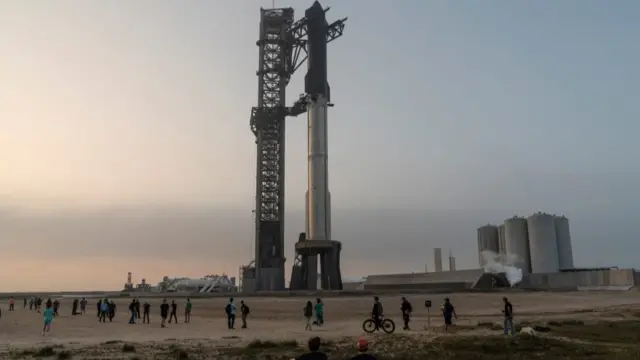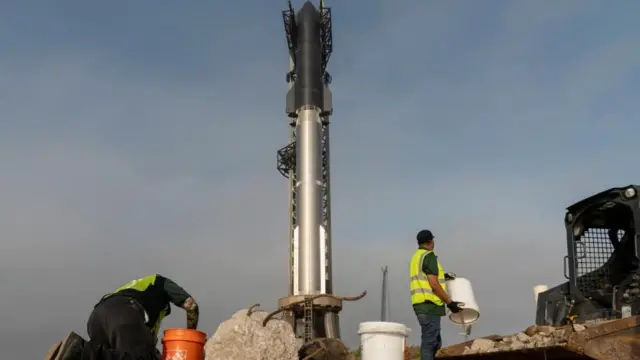What’s the plan for today’s launch?published at 12:07 GMT 14 March 2024
 Jonathan Amos
Jonathan Amos
Science correspondent
 Image source, Reuters
Image source, ReutersAssuming everything goes as planned, Starship will rise up and head down range across the Gulf of Mexico in the direction of the Atlantic and Africa.
Stage separation - when the booster has done its job and comes apart from the Ship - is timed to occur at about two minutes and 44 seconds into the flight. It's a key moment in the mission. The Ship actually starts up its engines just before separation to maintain momentum and push on towards space.
SpaceX wants the Super Heavy booster to try to fly back to near the coast of Texas and come down vertically, to hover just above the Gulf's waters. It will then be allowed to topple over and sink.
The Ship is expected to power on until eight minutes and 35 seconds after lift-off, at which point it will shut down its engines and coast. If it makes it this far, the Ship will be perhaps 150km (93 miles) above the Earth and moving at more than 20,000km/h (12,400mph).

